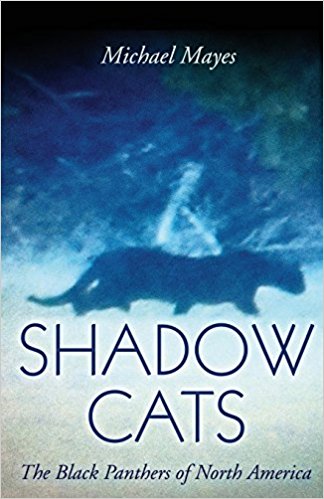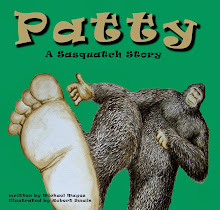 A new study, published in the Nov. 30 issue of American Naturalist, shows that primates are less susceptible to environmental ups and downs, particularly changes in rainfall, than other animals.
A new study, published in the Nov. 30 issue of American Naturalist, shows that primates are less susceptible to environmental ups and downs, particularly changes in rainfall, than other animals. Researchers from the National Evolutionary Synthesis Center (NESCent) in Durham, North Carolina looked at, literally, decades of data on birth and death rates for seven different primate species. The species examined were muriqui monkeys and capuchin monkeys in Central and South America, yellow baboons, blue monkeys, chimpanzees, and gorillas from the African Continent, and sifakas, a type of lemur, in Madagascar.
The collection of this much data was a monumental effort. Seven different research teams working around the world monitored the births, lives, and deaths of thousands of individual daily for more than 25 years. The researchers used a new database developed by the NESCent, to compile and cross-reference the data in an effort to find similarities between the species.
"Wild animals deal with a world that is unpredictable from year to year," said the lead author of the study, Bill Morris. The Duke biologist added, "The weather can change a lot; there can be years with plenty of food and years of famine."
The 25 years of data covered both good years and bad and seems to have run long enough to make the data scientifically valid. What the researchers found was interesting. Year to year survival rates of primates proved to be more stable than survival rates of other animals. The primate data was compared to that of two-dozen species of birds, reptiles, and mammals.

The co-author of the study Karen Strier , an anthropologist as the University of Wisconsin-Madison, said that primates possess some key traits that enable them to make seasonal adjustments to their diets.
"For one thing, they're social," said Strier. The fact that primates live in groups allows them to share information with each other. This shared information allows them to be more effective in locating sources of food and water during lean times.
Another, and perhaps even more important, trait that allows primates to survive better than other species during times when food-stuff is scarce is the ability to eat a wide variety of food items. Monkeys and apes will eat leaves, grasses, fruits, flowers, bark, and seeds. In short, unlike many other animals, they are generalists when it comes to their diet. This is a huge advantage over species that have specialized diets. When their favorite foods are in short supply, primates can adapt and eat something else. The article then goes on to hypothesize that similar traits may have helped early humans survive environmental ups and downs.

Could the study have any relevance to the sasquatch? Possibly. The fact is that nobody really knows how sasquatches live, socialize, or eat; however, we do have some anecdotal witness reports that could allow for educated guesses.
The first trait mentioned that the study points to as having given primates an advantage in surviving environmental ups and downs is their social nature. Multiple animals working cooperatively to spread out, scout, and forage over a large area makes finding suitable food and water much easier. I will be the first to admit that most sasquatch sightings are of a single individual. There are; however, sightings of multiple animals reported. Pairs, family units, and even twenty plus individuals (see "The Tale of Muchalat Harry" in the "Sasquatch Classics" archive) have been reported. The fact is we just don't know how sasquatches interact. Do they spread out during the day and "go home" at night? Do the females and/or young stay in one general area while males hunt/forage? We just don't know. The fact that the number of sightings of single animals dwarfs the number of reports featuring multiple animals would point to the sasquatch being a mostly solitary animal. But who is to say that when an individual animal is sighted it isn't out scouting or foraging for it's family unit?
Honestly, I was more interested in reading about how the broad diet of primates helped them survive tough times. It makes sense if you think about it. The more varied the diet of a given animal the better the chances said animal will find something to sustain itself. Specialization in diet is one reason species like the giant panda of China and the koala of Australia find themselves in trouble. It has even worked against humans in the past. For a prime example of how a specialized way of life, including diet, negatively impacted a people one need look no farther than the strategy used by the military during the Indian wars fought between the U.S. Government and the Native Americans that inhabited the Great Plains of North America in the mid to late 1800s. These tribes were expert horsemen and warriors. They were highly mobile, intelligent, and fierce. They proved to be more than a match for the U.S. Army. They had one weakness, however. That weakness was their near total dependence on their horses and the buffalo (American bison to be truly accurate). U.S. military strategists, after suffering several humiliating defeats, like the Battle of Little Big Horn, decided to do more than just engage the tribes directly. They would remove the very things these tribes needed for survival; their horses and the buffalo. Army scouts began swooping down on Indian encampments and, instead of engaging the braves, shot all the horses. Meanwhile, buffalo hunters were hired to kill as many buffalo as possible. An all out slaughter ensued. It wasn't long before fierce tribes like the Kiowa, Comanche, and Sioux were brought to the point of starvation. In a shockingly short amount of time the great horse culture of the plains was gone and the American bison was on the brink of extinction. Specialization helped the Native Americans of the Great Plains become very successful for hundreds of years but it proved to be their undoing in the end. Such is the possible fate of species that are overly dependent on one food source. If the food source disappears, for whatever reason, the species is likely to disappear as well.

It is encouraging that this study shows most primates are not overly dependent on one food source. It has long been theorized that the sasquatch is omnivorous and has a diet similar to that of bears. If so, they may be doing just fine as the river bottoms, forests, and swamps of Texas, Louisiana, Arkansas, and Oklahoma are incredibly rich in food sources. Populations of black bear have exploded in Oklahoma, Arkansas, and Louisiana. The bears are beginning to make significant headway in East Texas as well. If the sasquatch does have a highly varied diet like that of black bears then the chances of the species surviving increase dramatically.
Primates continue to surprise us with their intelligence and resilience. Each study that comes out seems to reveal something remarkable or validates claims about primates, particularly great apes, that were once deemed outlandish. If the sasquatch is indeed real then it is undoubtedly a primate (the debate over whether it is human or ape is one for another day). As such, it is among the most intelligent and resourceful creatures on the planet. This is good news if we are talking about the survival of the species. It is; however, going to make it that much tougher on the few who seek to document them.
Sources: National Evolutionary Synthesis Center (NESCent) (2010, December 2). Primates are more resilient than other animals to environmental ups and downs. ScienceDaily. Retrieved December 13, 2010, from http://www.sciencedaily.com¬ /releases/2010/12/101201124347.htm












No comments:
Post a Comment